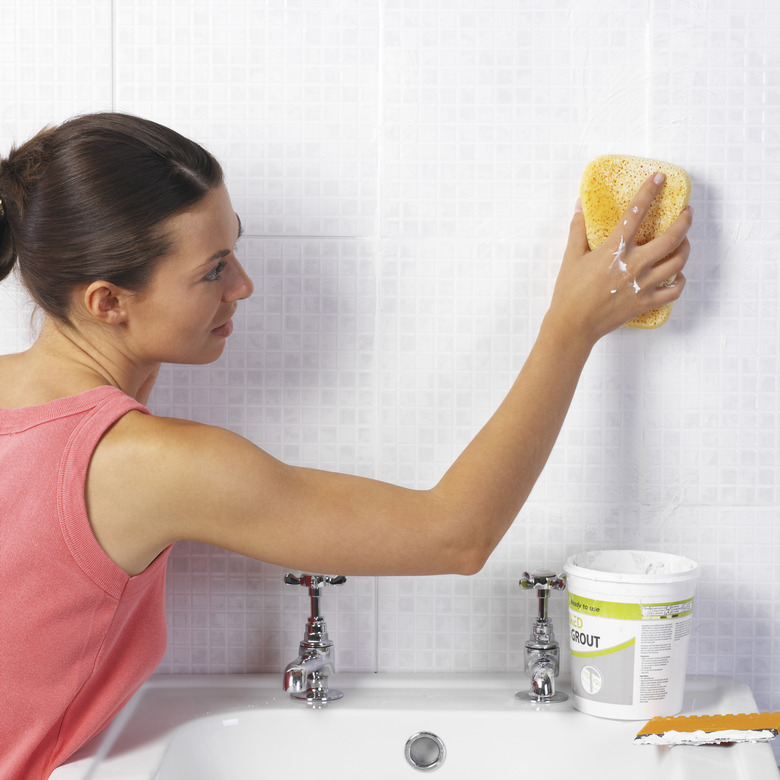How To Remove Dried-On Grout Haze From Tile
After a fresh installation, ceramic tiles are beautiful to behold. A few days after the installers have packed up and gone, or you've stashed away the last extra tiles and wiped down the many tools you used, the pristine surface of the ceramic tile may be covered in an unknown haze. This is typical of a tile installation. You thought you had already spent so much time on your hands and knees cleaning up what you could see, but as the fine particles of the grout job dry, they leave behind a haze. It would seem simple to wipe it up again. However, this last gasp of grout byproduct needs a little extra attention and elbow grease.
Materials for Grout Dust Removal
Materials for Grout Dust Removal
If the sparkling tile has turned dull in a matter of days, the good news is that it is temporary, and the materials needed to fix the problem are within reach. Unfortunately, you'll have to retrieve most of the tools you used to finish the tile and grout job in order to remove the haze from the surface. You'll need cleaning products such as vinegar, a bucket, rubber gloves, water, polishing terry cloths, a rubber grout float, tiling sponge, cheesecloths, a protective face mask and a flashlight. The mask is important because the particles are so small for this final part of the tiling project. The flashlight can help you find areas that may be overlooked by the naked eye, which can be hard to see once the project is seemingly complete.
Grout Haze Remover
Grout Haze Remover
It should be easy to clean up tile haze with basic, gentle astringents, such as a drop of mild dish-washing soap in a gallon of warm water or a spray bottle filled with the standard straight vinegar. Vinegar won't leave any residue behind, which some harsher detergents can be known to do on tile. Cleaning grout off tile with vinegar is safe and efficient for ceramic and porcelain tile installations and grout, but acid cleaners should never be used on porous or stone tiles, which includes vinegar and rubbing alcohol. A good dust mask should still be worn to prevent the tiny particles that created the haze from ending up in your eyes and nose. They can cause an itchy throat or troublesome cough after being inhaled.
Commercial Grout Haze Removers
Commercial Grout Haze Removers
If the grout haze is significant or stubborn after a good scrub with gentle cleaners, a commercial cleaner can cut through the gathering grime in no time. Haze created days after using a cement-based grout can be more difficult to remove. A good grout haze removal technique is to use rubber gloves and a mask while working in small areas across the floor, wall, counter or backsplash. Cheesecloth dabbed with commercial removers can get the haze off quickly and easily. If the haze lingers, a clean terry cloth towel can get through the haze when paired with the right cleaner.
When to Remove Haze
When to Remove Haze
If a film or haze shows up immediately, it's not time to get out the big guns just yet. Don't tackle the haze until you are sure that the grout has had time to set and become firm. Otherwise, the integrity of the structure may be compromised. If the haze has sat on the tile for a long period of time, it may require the more aggressive tile haze remover techniques. Always start with the least invasive option to remove grout haze. This will not only save time and money on labor and products but also reduces the chance of disturbing or damaging the tile.
